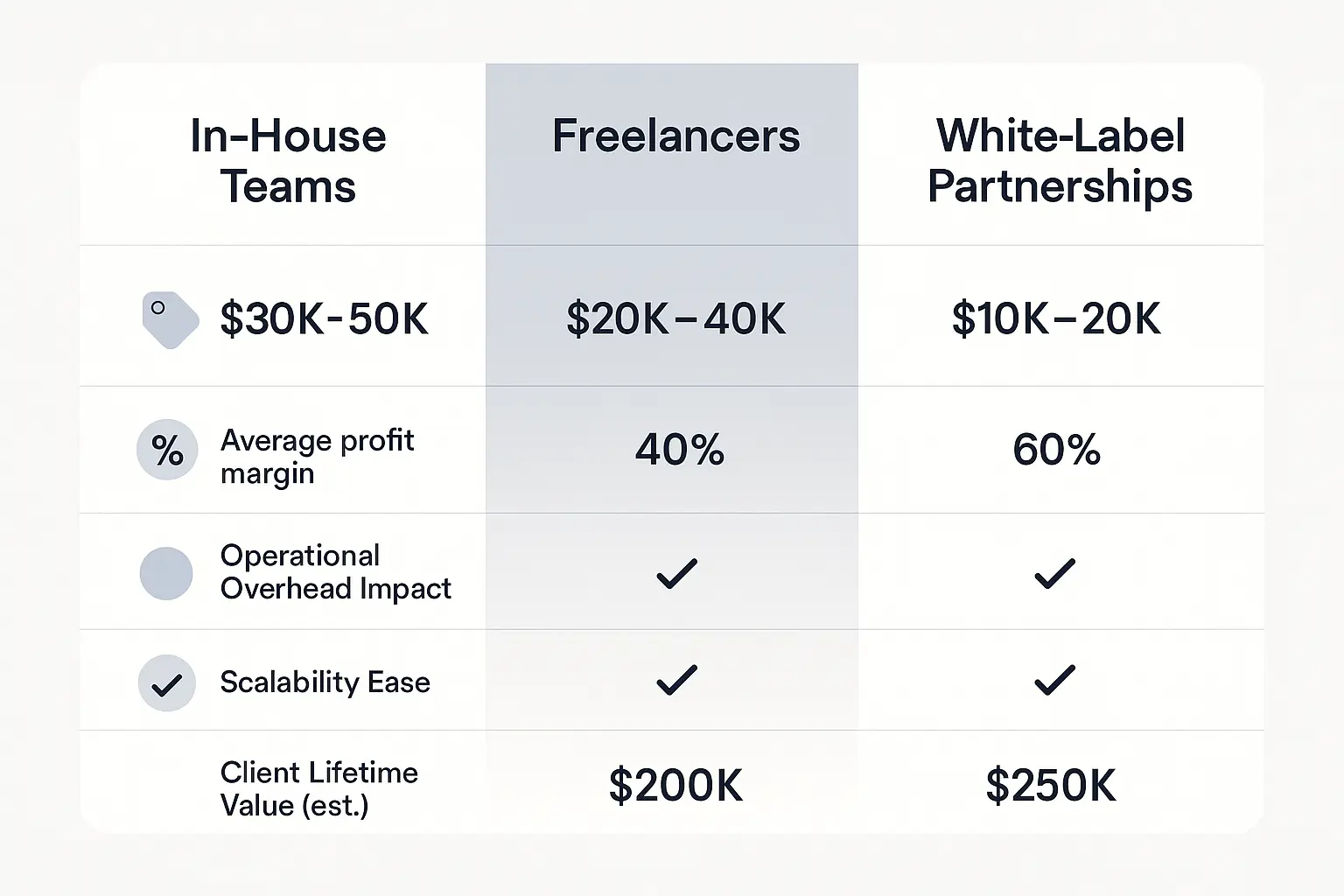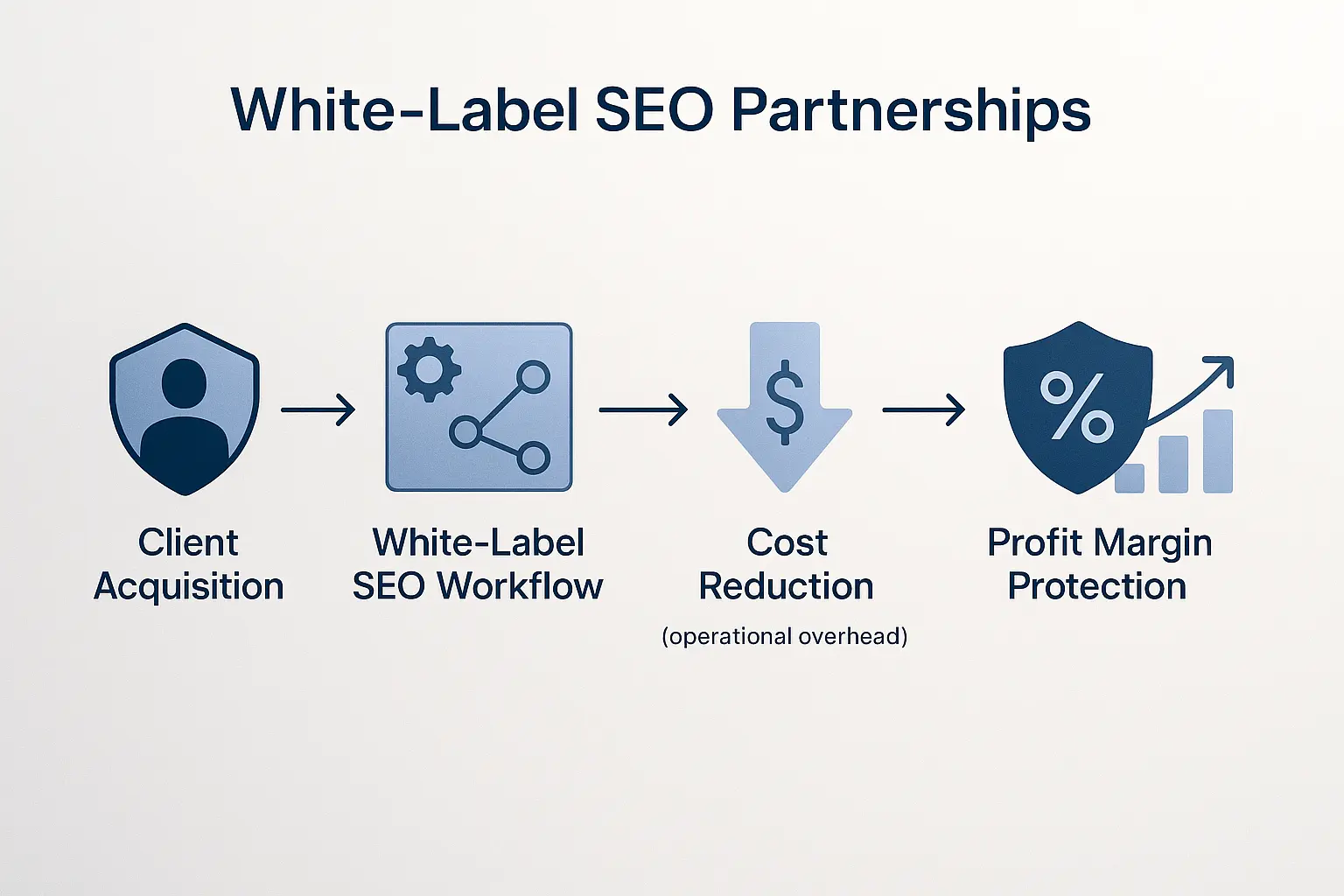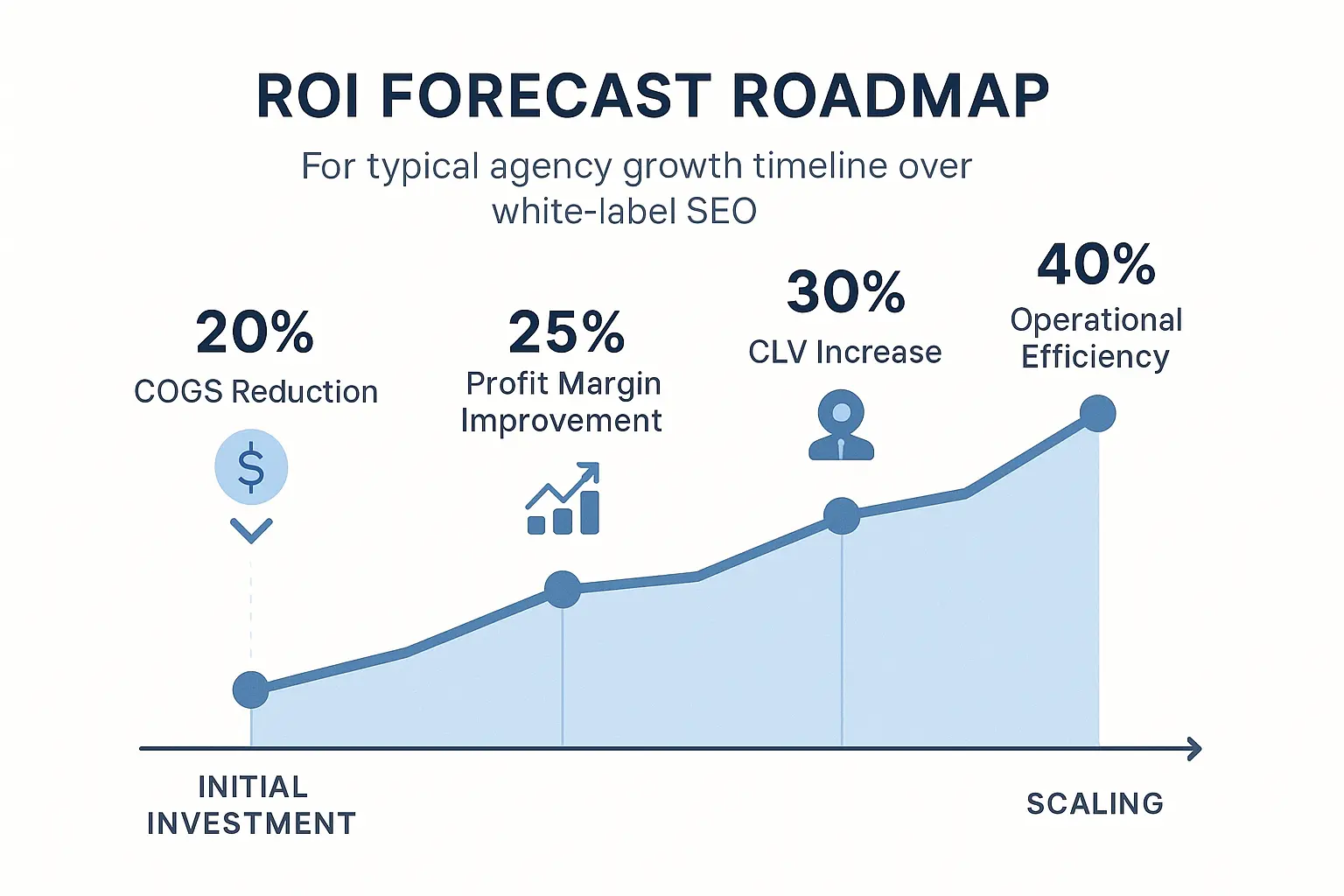Is your agency trapped in a cycle of feast or famine? You land a few big clients, your team is stretched to its breaking point, and profitability soars. Then, a contract ends, and suddenly you’re scrambling to cover your fixed overhead.
This constant push-and-pull between growth and burnout is the single biggest barrier to building a truly scalable agency. The problem isn’t your talent or your sales skills—it’s your delivery model.
To break free, you need to stop thinking like a service provider and start acting like a CEO. That means mastering the financial metrics that define sustainable growth and choosing an operational model that protects your profit margins at every stage. This guide provides the financial frameworks you need to make that strategic shift, moving from unpredictable revenue toward a predictable, profitable future.
Unlocking Growth: The Financial Metrics Every SEO Agency Must Master
Before you can optimize your agency’s profitability, you have to understand the language of financial performance. While there are dozens of KPIs you could track, three are non-negotiable for building a scalable SEO business.
- Cost of Goods Sold (COGS): This is the total direct cost of delivering your SEO services. It includes salaries for your SEO team, software subscriptions (Ahrefs, Semrush, etc.), and content creation costs. For agencies, COGS is the single biggest variable impacting profitability.
- Client Lifetime Value (CLV): This metric forecasts the total revenue you can expect from a single client account. A high CLV, estimated between $10,000 and $30,000 for an average SEO client, indicates strong client retention and satisfaction. It’s far more profitable to keep a client than to acquire a new one.
- Profit Margin: This is the bottom line. While gross margins for SEO agencies can theoretically reach 88%, the industry average hovers around a much tighter 15%, according to research from Starter Story. The gap between the average and the potential is where strategic operational decisions make all the difference.
Mastering these metrics shifts your perspective from simply fulfilling client work to building a resilient financial engine for your agency.
The Three Paths to SEO Delivery: A Financial Showdown
Every agency owner faces a critical decision: how to deliver the work. This choice directly impacts your COGS, scalability, and ultimately, your profit margins. Let’s break down the financial reality of the three primary models.
The In-House Team: Control at a High Cost
Building an in-house team gives you maximum control over quality and process. That control, however, comes with significant and often inflexible costs. Your COGS includes not just salaries but also benefits, taxes, training, management overhead, and expensive software licenses. These are fixed costs you have to cover whether you have five clients or fifty, making it hard to scale up or down efficiently.
Financial Reality: High fixed overhead, slow to scale, and a heavy drain on resources during lean periods.
The Freelancer Model: Flexible but Unpredictable
Using freelancers offers flexibility and lower fixed costs. You pay for what you need, which seems ideal for managing fluctuating client loads. But this model introduces unpredictability in quality, availability, and communication. The administrative overhead of vetting, managing, and coordinating multiple freelancers can quickly become a hidden cost that erodes your margins and distracts you from strategy and client relationships.
Financial Reality: Variable COGS, but hidden management costs and scalability bottlenecks limit true profit potential.
The White-Label Partnership: Scalability as a Service
A white-label partner acts as your invisible, on-demand SEO department. This model transforms your delivery costs from a fixed overhead into a predictable variable expense tied directly to revenue. You gain immediate access to a full team of experts and enterprise-grade technology without the financial burden of hiring. As you sign new clients, your delivery capacity scales instantly, allowing you to focus on growth.
Financial Reality: Predictable COGS, minimal overhead, and infinite scalability, creating the ideal conditions for protecting and growing profit margins.

The White-Label Advantage: How to Protect and Expand Your Profit Margins
Choosing a white-label partner isn’t just about outsourcing tasks; it’s a strategic decision to re-engineer your agency’s financial structure for profitability. Here’s how it works.
Drastically Lowering Your Cost of Goods Sold (COGS)
A specialized white-label provider like JVGLABS leverages economies of scale and advanced automation to deliver services far more efficiently than a typical in-house team. Our model uses AI-powered SEO automation to handle up to 90% of traditional SEO tasks, from technical audits to reporting. This massive efficiency gain is passed on to you through lower, predictable service costs.
Instead of paying for salaries and software, you pay a flat fee per client. This simplifies your COGS from a complex, unpredictable expense into a single line item, making it easier to price your services for a healthy margin—typically in the 50-60% range.
Increasing Client Lifetime Value (CLV)
Client retention starts with great results. Partnering with a specialist gives you access to an expert team that can deliver consistent, high-impact results, leading to happier clients who stay longer, which directly increases your CLV.
A white-label partnership also enables you to expand your service offerings without risk. You can confidently sell advanced strategies like omnichannel growth SEO, integrating signals from social, content, and paid campaigns to drive measurable business outcomes. By offering more value, you can increase retainer sizes and deepen client relationships, further boosting CLV. Remember, a single SEO client can be worth over $30,000—a number you can grow by delivering comprehensive, data-driven strategies.

The Agency Profitability Calculator: From Theory to Your Bottom Line
Ready to see how these models impact your agency’s numbers? While we can’t embed a live calculator here, you can build a simple forecasting model to compare scenarios.
Create a spreadsheet with the following columns: Monthly Client Retainer, Delivery Model (In-House vs. White-Label), Monthly COGS, Gross Profit, and Gross Profit Margin.
For the In-House Model: Calculate your COGS by adding up the monthly salaries of your SEO staff, a percentage of management overhead, and your total software subscription costs.
For the White-Label Model: Use the package price from a potential partner as your COGS.
Compare the Scenarios: Run the numbers for 5, 10, and 20 clients. You’ll quickly see how the fixed costs of the in-house model eat into your margins, while the white-label model maintains a consistent, healthy profit margin as you scale.
This simple exercise makes the data-driven case for the most profitable path forward.

Frequently Asked Questions: Addressing Your Core Concerns
Making the switch to a white-label model is a strategic decision, and it’s natural to have questions. Here are honest answers to the most common concerns we hear from agency owners.
Will I lose control over the quality of the work?
This is a common fear, but the right white-label partner operates as a seamless extension of your team, not a disconnected vendor. At JVGLABS, we work with you to define standards and strategies, and our blend of AI-driven execution and expert human oversight ensures consistency and quality at scale. You set the strategy; we handle the execution in the background.
Is it really cheaper in the long run?
When you calculate the Total Cost of Ownership (TCO), a white-label partnership is almost always more cost-effective. TCO includes not just salaries but also recruitment costs, benefits, software, hardware, office space, training, and management time. A white-label model eliminates nearly all of these ancillary costs, giving you a much clearer—and lower—COGS.
How do I maintain my brand and client relationships?
The model is built on a “white-label first” principle, meaning your partner remains completely invisible to your end client. All deliverables, reports, and communications are branded with your agency’s logo and messaging. You remain the single point of contact, strengthening your role as the trusted strategic advisor while we do the heavy lifting behind the scenes.
How should I price white-label SEO services to ensure profitability?
A standard practice is to mark up the white-label cost by 2-3x. For example, if a partner’s package costs you $1,000 per month, you would charge your client between $2,000 and $3,000. This approach secures a gross profit margin of 50-67%, which is well above the industry average and provides a strong foundation for sustainable growth.
Your Next Step: Building a More Profitable Agency
Profitability isn’t about finding more hours in the day or pushing your team to its limits. It’s about designing a smarter, more resilient business. By shifting your SEO delivery to a white-label model, you transform your cost structure, unlock near-infinite scalability, and free yourself to focus on what you do best: building client relationships and growing your agency.
Stop letting operational drag dictate your potential. It’s time to build an agency where growth and profitability go hand in hand.
Ready to see how an AI-driven, white-label partner can transform your agency’s bottom line? Explore our white-label SEO services for agencies and discover a new path to scale.

